The diminutive yacht OYSTER, a Milford 20, is a modern take on the early New Haven sharpies that worked the oyster beds along Long Island Sound’s Connecticut shores. Inspired by Mark Fitzgerald’s FLORIDAYS in Reuel B. Parker’s The Sharpie Book, the 20′ 6″ OYSTER was designed and built by Neville Watkinson of Milford Boats in Christchurch, New Zealand, and carries either a cat-ketch or a cat-schooner rig.
The sharpie design is well known, but the elements setting the Milford 20’s classic design apart are the counter stern and the cabin with its elliptical port-lights and trim, details that would usually be found on a much larger yacht. OYSTER has been greatly admired at recent classic and traditional boat events in our area of New Zealand. Its classic lines, beautiful counter stern, and immaculate finish readily show the careful thought that has been given to the integrity of the design and the quality of craftsmanship.
The 52-page build manual is comprehensive, with full sequential notes on the whole process enhanced with clear photographs and detailed drawings. The documentation would put the boat within the range of an amateur builder with good woodworking skills and access to a reasonable range of tools and workshop facilities. On OYSTER, the time and care that went into building the coach roof, coamings, lazarette, bulkheads, portlights, rails, and moldings were well rewarded. OYSTER took approximately 1,000 hours to build and outfit.
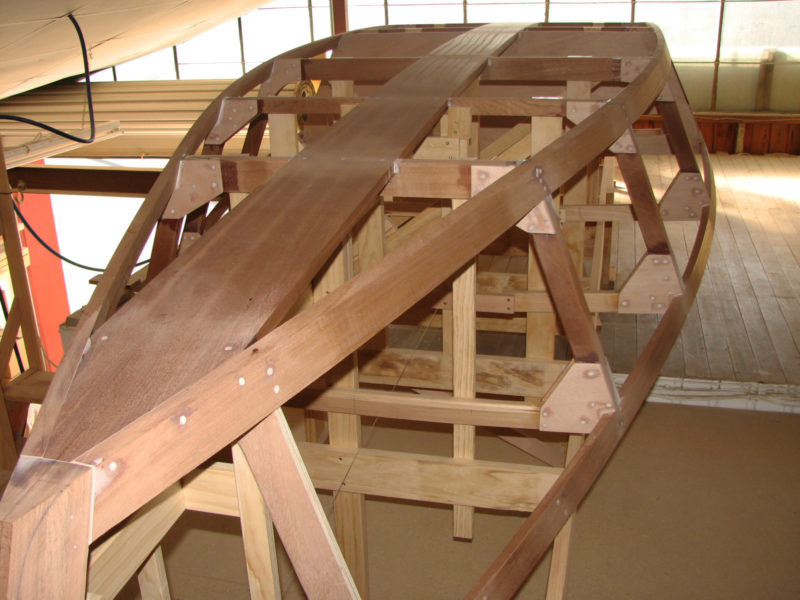 Neville Watkinson
Neville WatkinsonOYSTER, the first Milford 20, had sapele chine logs, sheer clamps, frames floors, and keelson. Any durable straight-grained wood may be used.
Construction largely follows that of traditional plank-on-frame boats, but uses plywood for sheathing the hull. The Milford 20 is built upside down over a ladder frame without any temporary molds; the hull is built around the permanent timber frames and longitudinal members. The bottom is 12mm plywood, the sides 9mm, and the deck 6mm. To plank the strong curve of the counter, three layers of 3mm plywood were laminated. There are three 12mm plywood bulkheads: The bulkhead in the bow is open, and the stern bulkhead, set just ahead of the rudderpost, encloses a lazarette that provides buoyancy when its watertight hatch is sealed. The addition of some foam throughout the hull would be advised to add sufficient positive buoyancy to support hull and crew in event of a capsize. The hatch on the foredeck provides access to the anchor, which stows in the bottom of the boat where it can contribute to the boat’s stability.
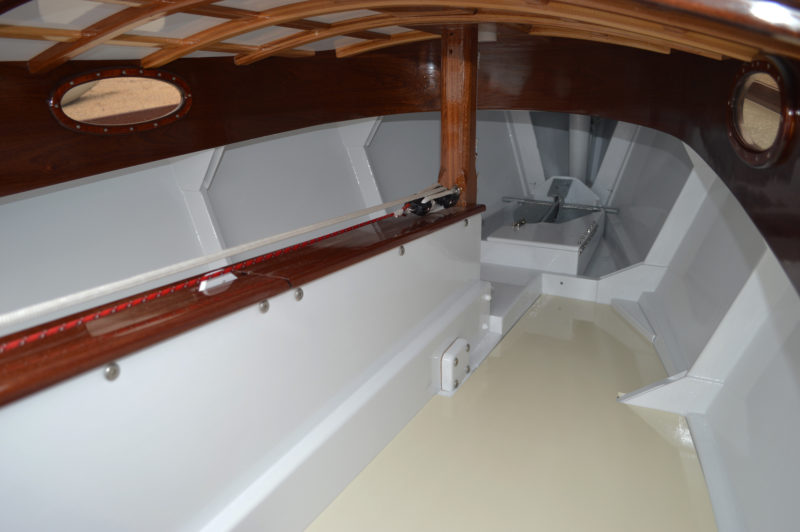 Matt Vance
Matt VanceA double luff tackle (with a double-sheave block and a triple-sheave block) stretched out along the top of the trunk greatly eases the burden of raising the heavily weighted board. The anchor and chain have their place in a box in the bow.
The boat’s centerboard has an unusual construction. It’s a stack of thirty 1-7/8″-thick NACA foil sections, 17 of them hardwood, nine of them half wood, half lead, and four of them entirely made of lead, adding 121 pounds to the board’s weight. The stack is assembled on three 10mm stainless-steel rods with threaded ends for nuts and washers to pinch the epoxy-slathered sections together. The board then gets its sides sheathed with 6mm plywood, a leading edge of oak before a layer of epoxy and ’glass or Dynel.
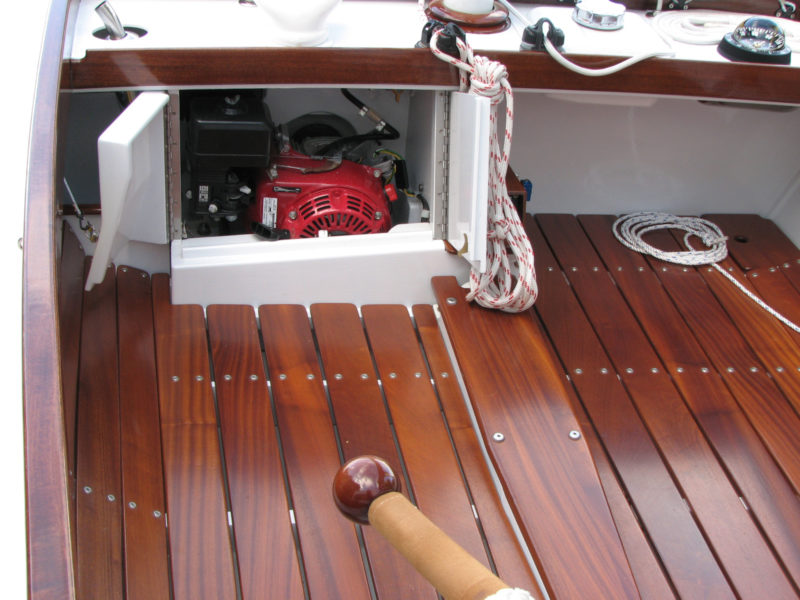 Neville Watkinson
Neville WatkinsonThe plans include a sheet devoted to the installation of an air-cooled gas engine. It is “intended as a concept guide” rather than DIY instructions. In the construction manual the designer notes: “The clutch, timing belts, and pulleys cost more than the engine! I would probably just go with electric drive if starting over.”
Although not essential, auxiliary power makes it possible to get through marinas and lulls in the wind. OYSTER has a 6-hp, air-cooled Honda GX 200, an industrial four-stroke engine, neatly and unobtrusively mounted under the bridge deck. The engine was easy to start with a pull or two of its cord, quiet, and provided ample power for launching and hauling out as well as for a short passage in a short choppy seaway. Milford Boats reports that the inboard pushes the boat along at 4.5 to 5 knots and sips gas at the rate of about 1 gallon per sailing season.
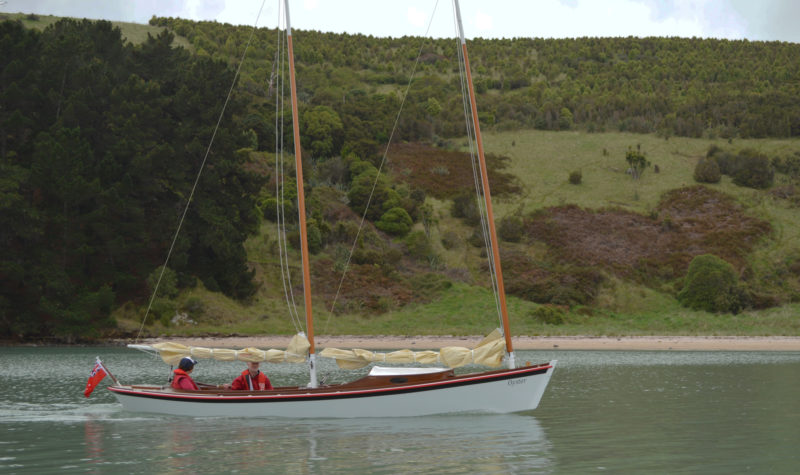 Matt Vance
Matt VanceThe optional inboard engine will keep the Milford moving at up to 5 knots when there isn’t any wind.
The engine is set to port, and a belt drive turns the prop shaft that emerges from the skeg forward of the rudder. The three-bladed prop is protected by a stainless-steel plate connecting the skeg and bottom of the rudder. The prop doesn’t feather or freewheel and causes a little drag, but this is a minor concern as the auxiliary power is a major benefit. A bracket for mounting a small outboard to one side of the hull may be a more appealing option to those who are uneasy about installing a shaft log. The long, slender hull and cockpit geometry suggest that the boat could be comfortably rowed if a builder wanted to fit a thwart or two and oarlocks.
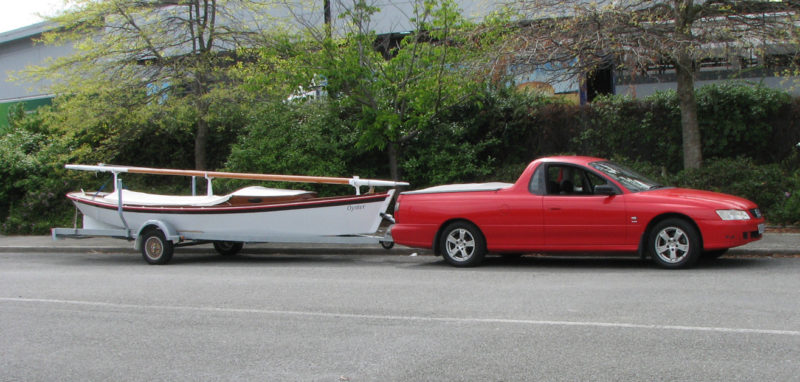 Neville Watkinson
Neville WatkinsonSitting on the trailer designed for it, the Milford 20 doesn’t obscure the driver’s view to the rear. The towing weight with trailer, boat, rig, and gear is 1,320 lbs.
The build manual includes plans for a steel trailer custom-fit to the Milford 20. It was easy to use and, with the boat aboard, weighs around 1,320 lbs—an easy towing load for a small to average-sized vehicle.
At the launch ramp, two of us easily assembled the schooner rig in about 20 minutes. While the unstayed Douglas-fir masts, each weighing 30 lbs, are not heavy, they are awkward to maneuver, and best handled by two. Once the masts are stepped, the rest of the preparation is quickly accomplished. Most lines and sheets are kept in place when the masts are down for trailering, so it takes little time to rerig the boat at the ramp.
Similarly, retrieving the boat from the water and securing it on the trailer at the end of our outing took about 20 minutes. With all sailing gear packed easily in the boat and the masts resting in three crutches, one in each mast step and a third in the hollow rudder post, the Milford 20 is ready for travel. The compact and low profile of the boat on the trailer makes for easy towing and clear all-round vision on the road.
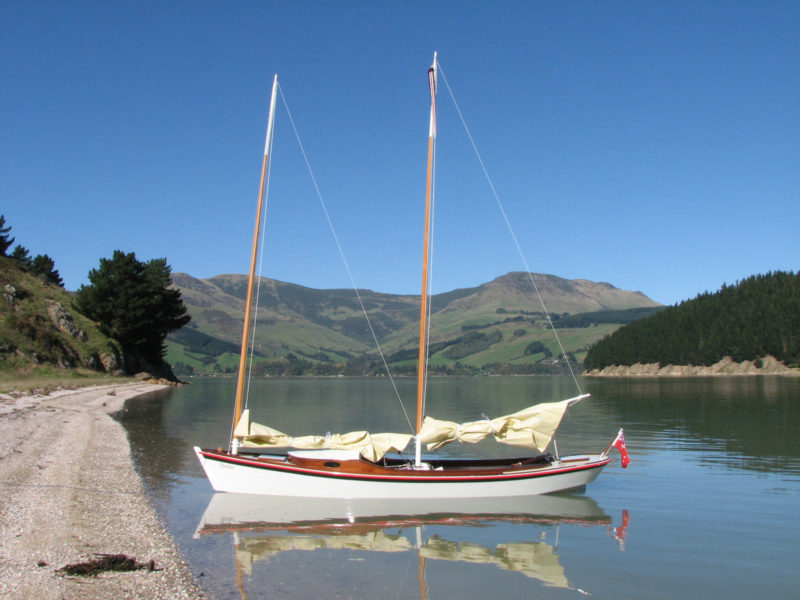 Neville Watkinson
Neville WatkinsonThe Milford 20 has a third mast step for sailing with a single sail. A deck plate covers the hole in the forward end of the cabin roof when that step is not in use.
We sailed OYSTER on the open water of Lyttelton Harbor on the east coast of New Zealand’s South Island on a late autumn day under clear skies with a breeze at 5 to 8 knots, later rising to over 10 knots. The Milford 20 is only about 4′2″ across at the widest part of the bottom, but was extremely stable under sail. It proved to be a responsive and easy to handle while underway. The thoughtful placement of the fittings and lines ensures that any adjustments can be made from a sitting position in the comfort of the main cockpit.
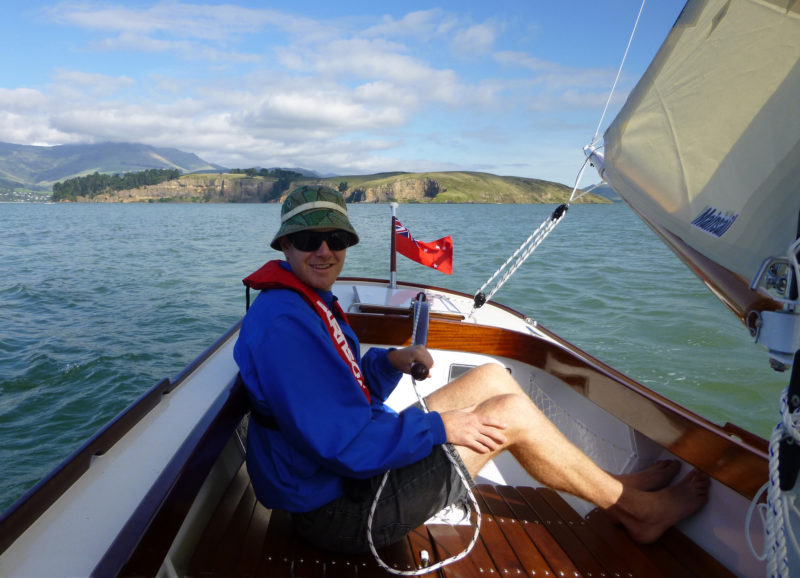 Neville Watkinson
Neville WatkinsonThe low sharpie profile makes the floorboards the best seating for the crew. The mainsail sheet is led to the tiller.
The cockpit isn’t deep, so the floorboards, along with throw cushions and a broad coaming, provide comfortable, dry seating as well as a secure feeling while underway. Even as the wind strength increased soon after we got underway and both sails were reefed, it was not necessary sit out on the windward side decks to counter the heeling. If we had additional crew sitting in the cockpit forward of the bridge deck/mizzen partner, they too would have been very secure, dry, and well clear of the rigging as we sailed the boat from rear cockpit.
Both cockpits are long enough to sleep in—6′2-1/2″ forward and 5′11″ aft—but the available spaces in the forward cockpit, either side of the centerboard trunk, have maximum width of about 22” and the aft cockpit has a 4’2″ maximum width. The limited space would be rather restrictive for sleeping. It would be a much more practical proposition to carry a tent and camping equipment on board for parking the crew onshore overnight. The generous space under the fore deck and in the enclosed aft compartment provide adequate out-of-the-way stowage for cruising and camping gear.
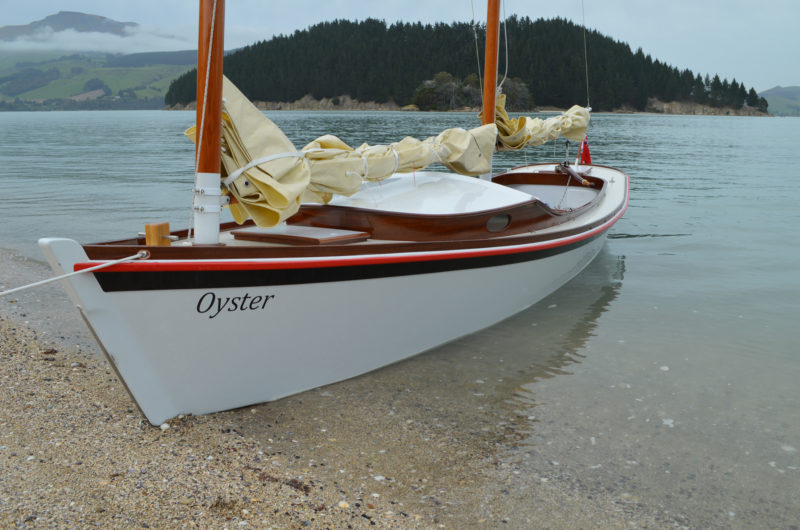 Matt Vance
Matt VanceWith a hull that draws only 10″ and a forefoot right at the waterline, the Milford 20 takes well to nosing up on a sandy shore.
During our sail we raised the centerboard and ran OYSTER gently on a sandy beach, stepped ashore, and made a cup of hot coffee using a small portable stove and supplies stowed in the watertight locker under the lazarette. The hull is well protected by Dynel, providing a hard, damage-resistant surface. The Milford 20’s light weight—695 lbs for the hull, including the weighted centerboard—and its shallow 10” draft made the beach landing and relaunching a very easy exercise.
The balanced rudder is 37″ long and 13″ tall at the trailing edge, and has a shape typical of traditional sharpies but with a more modern feature: a 6″-wide horizontal bottom plate to keep water from decreasing the rudder’s effectiveness by slipping under it.
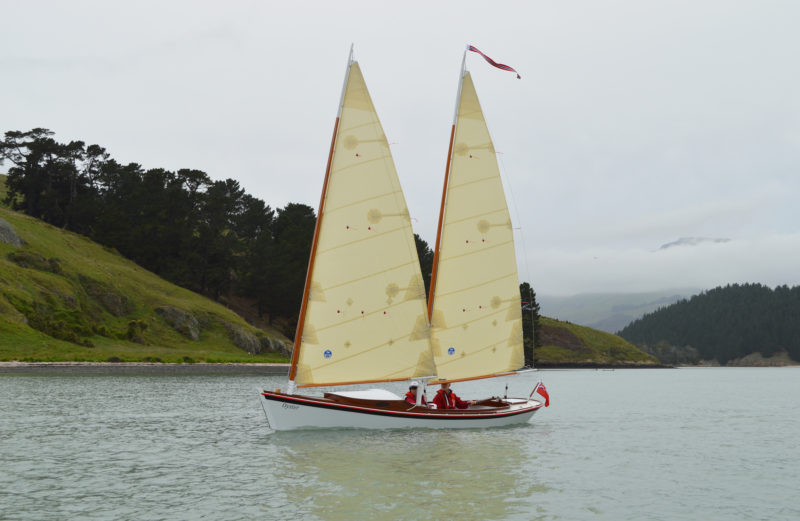 Matt Vance
Matt VanceThe cat-schooner rig, seen here, has 67 sq ft in the main and 76 sq ft in the foresail. The alternate cat-ketch rig has 80 sq ft in the main and 62 sq ft in the mizzen. The designer favors the cat-schooner rig.
The modest sail area performs very well in both light and brisk breezes. However, having a long and slender hull and a tall rig, the Milford 20, like most sharpies, needs to be sailed with no more than 10 or 15 degrees of heel. It did sail comfortably with the lee rail under, although it is preferable to reduce heel in a choppy sea to prevent water from entering the cockpit. In winds of 10 to 12 knots, reefing the main would be advised for stability and comfort and in 15 knots it’s recommended that both sails be reefed. Reefing either sail is easily managed from the cockpits.
The Milford 20 obviously does not sail as close to the wind as a sloop-rigged boat of similar size, but it was very secure with a desirable positive helm. It moved readily in light airs, in a rising wind, and was very comfortable both upwind and running downwind.
The structure and configuration of the boat makes it a safe and pleasurable sailing boat in a range of conditions on moderately sheltered waters. It is not an offshore or coastal cruiser but an able craft that could appeal to sailors of all ages and abilities. The dry, secure cockpit and centralized rig controls would obviously have a wide appeal for older sailors or those with limited mobility. For the inexperienced, it is easily managed and forgiving underway.
Overall the Milford 20 design appeals as a very elegant, classic craft for home building, and gives a great sailing experience for both experienced and inexperienced sailors. It also would be a suitable craft for a couple or family of four; a delight to sail and appealing to those who want a safe boat for leisure and pleasure.![]()
Peter Braithwaite ONZM has had a career as a teacher, school principal, administrator, training manager, consultant and foreign-aid adviser in New Zealand and the Pacific islands. He now lives in Christchurch where he continues his lifetime passion for recreational sailing and building small boats from RC pond sailers to competitive racing dinghies and harbor racing yachts. For the past ten years he has been the organizer of the Canterbury Classic & Traditional Boats group that promotes and organizes regular regattas and activities for classic, restored, and replica traditional boats in the local region.
Milford 20 Particulars
[table]
Length/20′6″
Beam/5′8″
Draft, board up/10″
Draft, board down/3′3″
Sail area/145 sq ft
Displacement/1,360 lbs
Hull weight (including centerboard)/695 lbs
[/table]
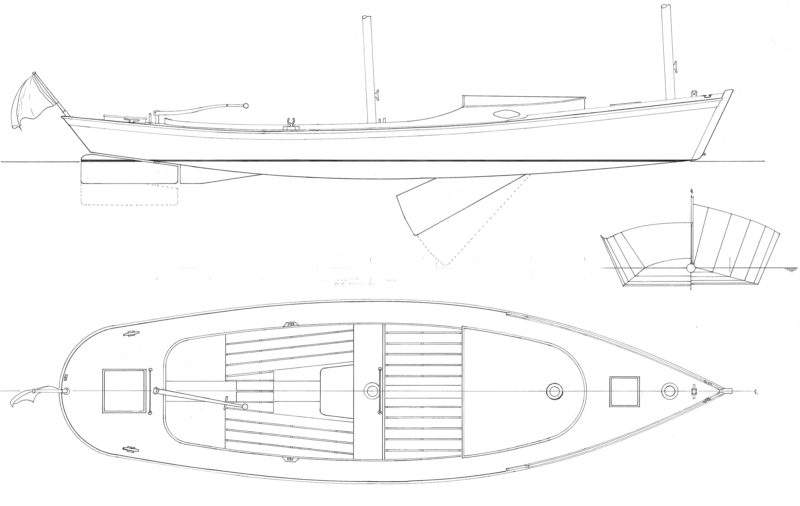
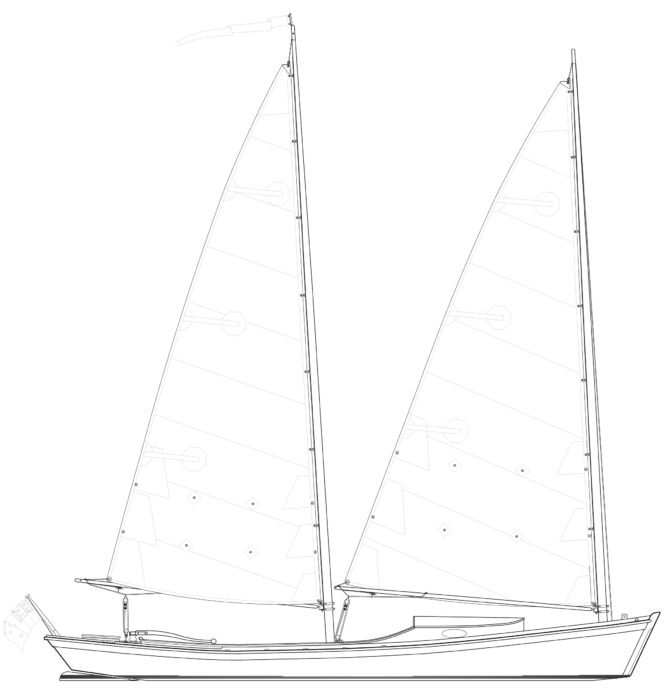
Schooner rig
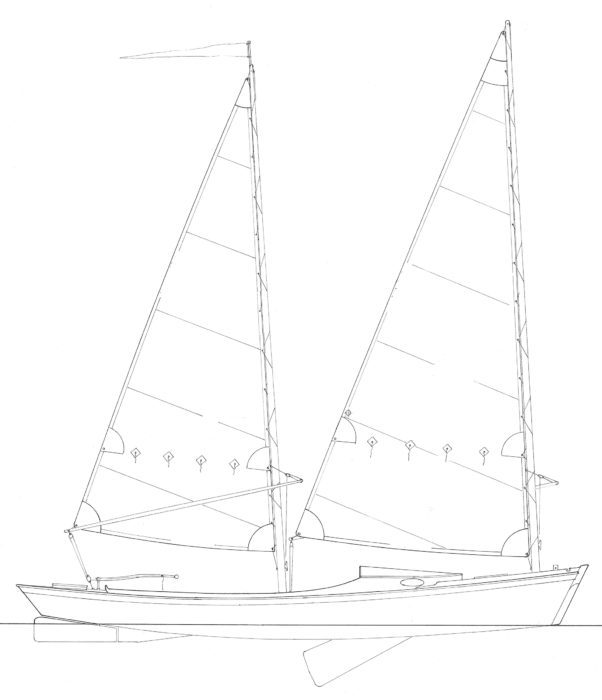
Ketch rig
Plans for the Millford 20 are available from Milford Boats on paper for $120 and as digital files for $80.
Is there a boat you’d like to know more about? Have you built one that you think other Small Boats Monthly readers would enjoy? Please email us!
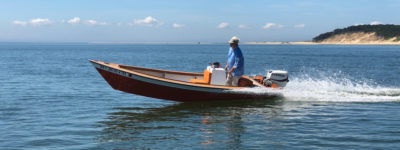
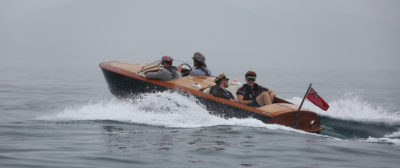
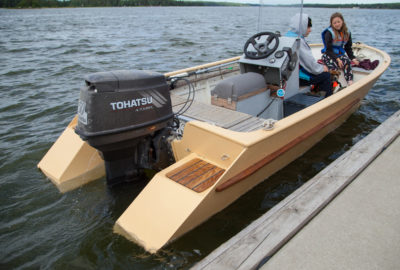

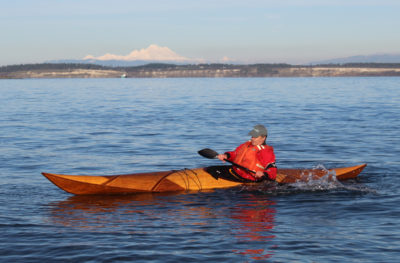

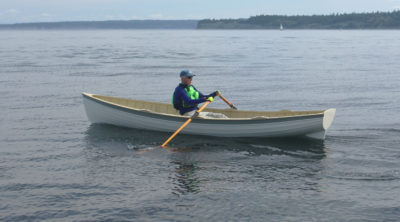
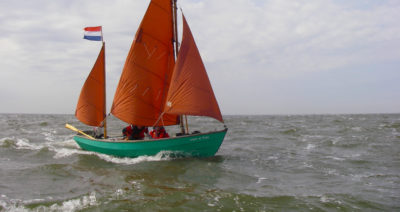
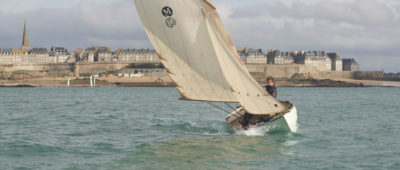
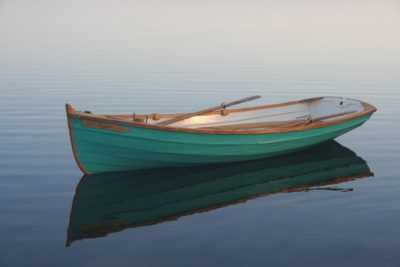
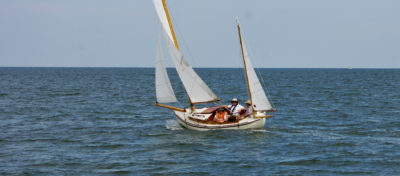
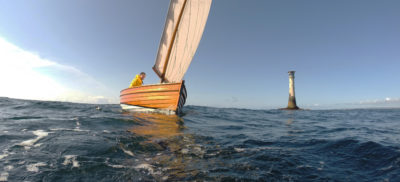
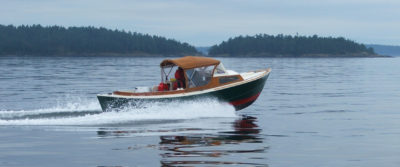

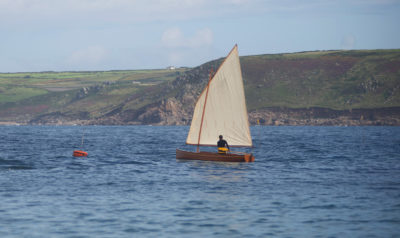
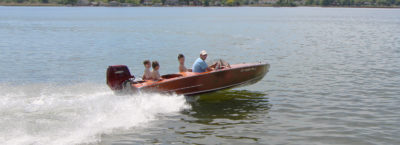
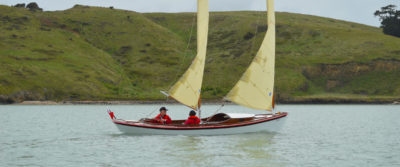
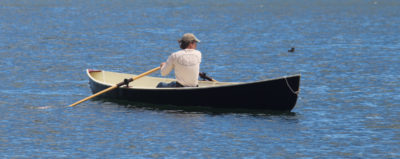
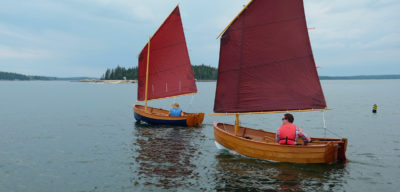
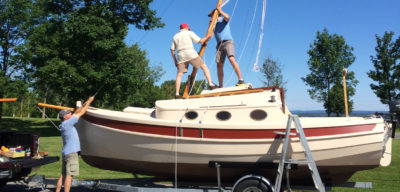
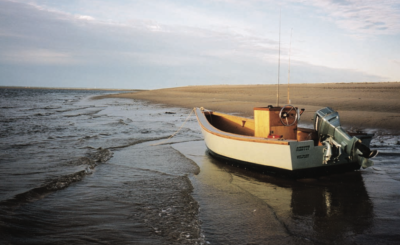
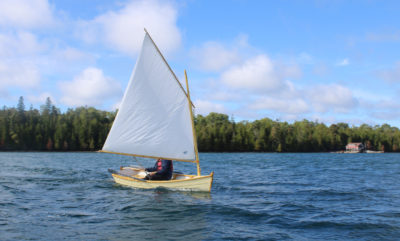
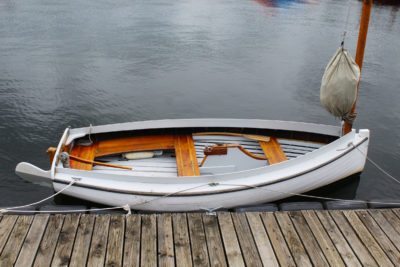
The Milford 20 is a handsome boat. However, if the boat capsized, could it be righted and bailed out? The only flotation is a lazarette, which would provide flotation if the crew always remembered to fasten the hatch. The weight of the engine needs also to be considered.
The best way to answer the question would be for the builders to say that the boat meets the criteria for the Recreational Craft Directive Category D (for sheltered waters).
Duncan provided links to the Recreational Craft Directive. Here are some relevant sections:
A boat given design category D is considered to be designed for occasional waves of 0,5
m height and a typical steady wind force of Beaufort force 4 or less. Such conditions may
be encountered on sheltered inland waters, and in coastal waters in fine weather. Winds
are assumed to gust to 13 m/s.
INTEGRITY AND STRUCTURAL REQUIREMENTS
3.1. Structure
The choice and combination of materials and its construction shall ensure that the watercraft is strong enough in all respects. Special attention shall be paid to the design category in accordance with Section 1, and the manufacturer’s maximum recommended load in accordance with point 3.6.
3.2. Stability and freeboard
The watercraft shall have sufficient stability and freeboard considering its design category in accordance with Section 1 and the manufacturer’s maximum recommended load in accordance with point 3.6.
3.3. Buoyancy and flotation
The watercraft shall be constructed as to ensure that it has buoyancy characteristics appropriate to its design category in accordance with Section 1 and the manufacturer’s maximum recommended load in accordance with
point 3.6. All habitable multihull recreational craft susceptible of inversion shall have sufficient buoyancy to remain afloat in the inverted position.
Watercraft of less than 6 metres in length that are susceptible to swamping when used in their design category shall be provided with appropriate means of flotation in the swamped condition.
3.4. Openings in hull, deck and superstructure
Openings in hull, deck(s) and superstructure shall not impair the structural integrity of the watercraft or its weather tight integrity when closed.
Windows, port lights, doors and hatch covers shall withstand the water pressure likely to be encountered in their specific position, as well as point loads applied by the weight of persons moving on deck.
Through hull fittings designed to allow water passage into the hull or out of the hull, below the waterline corresponding to the manufacturer’s maximum recommended load in accordance with point 3.6, shall be fitted with a means of shutoff which shall be readily accessible.
3.5. Flooding
All watercraft shall be designed so as to minimise the risk of sinking.
Where appropriate, particular attention shall be paid to:
(a) cockpits and wells, which should be self-draining or have other means of keeping water out of the watercraft interior;
(b) ventilation fittings;
(c) removal of water by pumps or other means.
What a sweet looking boat!!! I’m sure that there will be many seeking to build or buy this one. Well done, Nev, hope to see more of your work.
I received the study plans and I fell in love with this boat. Maybe one day I’ll start to build it.
I bought this boat building designs. I hope to build asking permission to health.I love sailing for a long time and have built several boats, including some proas and small catamarans. I’m not young anymore and so I have less energy. I hope my health stays good because I need time to get ready for a new project and maybe start building the Milford 20 that I like so much.
Having been in discussion with the designer, I am now in proud possession of new study plans for a gaff cat schooner version… full plans being ordered the end of this week!